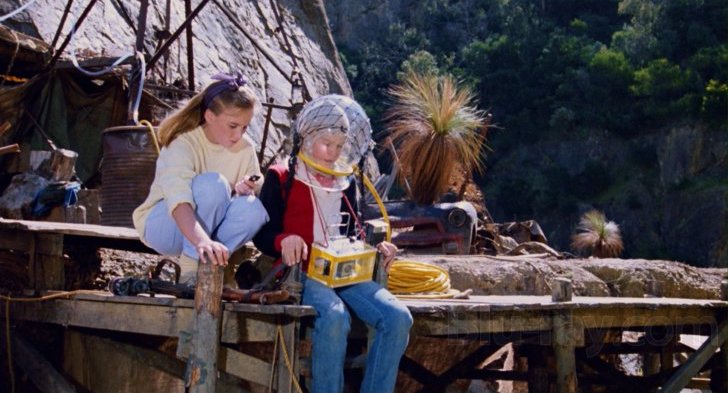
In many ways Frog Dreaming (1986) is the Australian response to The Goonies (1985). Screenwriter and producer Everett De Roche adds one crucial element to Frog Dreaming that makes it unique among these types of children’s adventure films: Kurdaitcha culture. Even when not entirely successful dramatically, Frog Dreaming manages to capture the ways in which local folklores evolve and grow over time as different communities interact with the same space. De Roche isn’t the only luminary of the Australian New Wave to work on Frog Dreaming, Brian Trenchard-Smith directs.
Frog Dreaming concerns a young boy, Cody (Henry Thomas), who, along with his best friend Wendy (Rachel Friend), investigates a pond that is allegedly a place of Aboriginal spirituality after an old man is found dead there. From the beginning Frog Dreaming attempts to address the legacy of imperialism in Australia while simultaneously functioning as a kind of a Hardy Boys or Nancy Drew mystery. “Frog dreaming” itself is a phrase associated with sacred Aboriginal locations and the filmmakers try as hard as possible to be respectful of Aboriginal Australians as possible without betraying the inherent racism that exists in the kinds of rural white communities depicted in the film.
Personally I found Cody and Wendy’s interactions to be more organic and true to life than anything on display in The Goonies. Cody and Wendy, while conforming to archetypes (the “wunderkind” and “the girl next door”) are allowed enough dimension to appear multi-faceted and compelling. They have an innate chemistry as performers that helps to sustain an appropriately awkward romantic tension throughout the film that rarely feels as authentic as this in other similar pictures.
Frog Dreaming is one of a dozen or more films made in Australia during the eighties that attempt to reckon with the systemic oppression of the Aboriginal population. These films mirror the penchant in American genre films of the same period that endeavored to address the issue of genocide amongst the indigenous people. Frog Dreaming shares a number of the same narrative motifs with Kadaicha (1988) and both recall in subtle ways Scalps (1983). The main difference with Frog Dreaming is that there is no retribution dealt to the white characters by the oppressed indigenous peoples.
Unfortunately Frog Dreaming never got much of a release. The film was given an array of different titles for release in various territories which only confused matters. Additionally the promotional art for Frog Dreaming was much darker and far more spooky than anything that appears in the film itself. It has only been in the intervening years through numerous home video releases that Frog Dreaming has found its audience.
